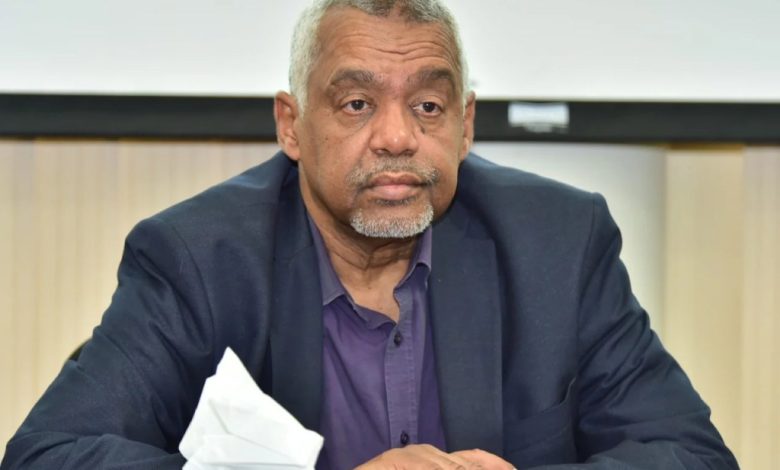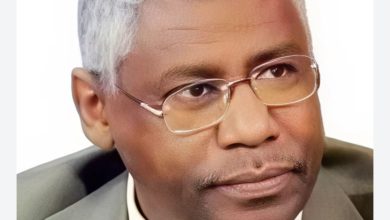Opinion
Waiting for American “Resistance”

By Abdul Wahab Al-Afandi
I rarely watch movies these days, except occasionally during flights when I get the chance to browse through what’s available. Recently, I came across a film produced this year titled Civil War. The movie depicts a rebellion movement from major U.S. states, notably California and Texas, collectively referred to as the “Western Powers,” against Washington. The plot revolves around four journalists attempting to travel from New York to Washington to interview the president who triggered the war through his dictatorial measures (suggesting he was serving a third term, indicating he either violated or amended the Constitution). The president, in his daily speeches, promised a decisive victory over the rebels, who were nearing the capital. Meanwhile, daily protests erupted demanding basic necessities like water, the dollar’s value plummeted, and cities descended into chaos, ruled by violence and firearms.
The rebels, however, are not portrayed in a better light than the delusional political leadership. They kill prisoners, journalists, and civilians, with many not even knowing why they are fighting. While the journalists are the protagonists, they eventually succumb to the chaos, becoming “embedded reporters” (or, more accurately, conscripts) moving between armies, with some even donning military uniforms to legitimize the situation. Among the team, a young woman stands out—a protester against water shortages saved by the lead journalist from police brutality (scenes of protesters being killed or bombed are commonplace in the film). The team takes her along as a trainee photographer on their journey to Washington. When her mentor and protector is killed trying to save her near the White House, she coldly continues filming the scene. Another journalist records rebels storming the White House and executing the president’s chief guard, who had come to negotiate his surrender. When the president himself is captured and dragged out from under his desk, pleading not to be killed, the journalist films his last words, “Don’t let them kill me,” before walking away as the president meets a gruesome death.
This narrative, blending fiction with foreboding, is reminiscent of Lionel Shriver’s novel The Mandibles: A Family, 2029-2047, published in mid-2016, just before Donald Trump’s first presidential election. The book tells the story of a wealthy American family who lose everything under a delusional president advancing an “America First” policy interpreted as “America Alone.” Faced with a spiraling debt crisis and excluded from a new global economic bloc, the fictional president responds by nullifying U.S. debt, criminalizing the use of the new international currency as treason, and nationalizing all domestic gold assets. These actions render U.S. treasury bonds worthless, bankrupting businesses and individuals, including the Mandible family.
The U.S. debt crisis is a recurring theme in dystopian narratives, alongside fears of resource depletion in a country addicted to overconsumption.
In this grim reality, countries cease economic dealings with the U.S., leading to economic collapse and a worthless dollar. Famine and disasters spread, prompting millions to emigrate, especially to Mexico, which ironically builds a wall to keep northern refugees out. (For added irony, Shriver’s fictional president is of Mexican descent!) The Mandible family relocates to New York before eventually fleeing to Nevada, which declares independence.
Fiction often precedes reality or articulates it more vividly. Successive warnings from academics, thinkers, novelists, filmmakers, and opinion writers about the simmering issues in American politics, economics, and society predict worsening conditions. Writers and filmmakers may exaggerate for dramatic or cautionary purposes, as seen in Civil War and other works.
The Shadow of an “American Resistance”
America today shows increasing signs of impending trouble. This is not just about the unsettling prevalence of firearms and daily mass shootings, often targeting schoolchildren. The graver concern is the political opportunism and escalating extremism perpetuating this irrationality, all under the guise of protecting freedoms and the sacred Second Amendment, which advocates the right and duty to bear arms against tyranny. The powerful gun lobby, now second only to the pro-Israel lobby, has made opposing it career suicide for any ambitious politician.
This self-destructive irrationality mirrors the American establishment’s blind support for the Zionist colony in Palestine, a policy that has drained lives, money, and moral credibility. Both reflect a suicidal syndrome, glorifying self-destruction under the guise of virtue, despite the evident futility of such paths.
The world, not just America, faces dark times ahead. Yet Trump will ultimately be America’s punishment.
Like the twin crises of soaring national debt and deadly drug addiction, America’s destructive dependencies lead to inevitable ruin. Ironically, the public debt rose alongside the rise of neoliberalism under Ronald Reagan and George H.W. Bush, climbing from 26.2% of GDP to 49.5% at the start of Bill Clinton’s presidency in 1993. It then fell to 33% by the end of Clinton’s term in 2001. However, debt skyrocketed under George W. Bush, doubling from $3.3 trillion to $6.4 trillion by 2008, the year of the global financial crisis. This increase stemmed mainly from America’s costly wars in Iraq, Afghanistan, and the broader Middle East. Today, public debt stands at $35.46 trillion, equivalent to 123% of GDP, according to U.S. Treasury data.
Unsurprisingly, the U.S. debt crisis is a central theme in dystopian depictions of impending doom, alongside resource depletion in a nation addicted to unsustainable consumption. Trump’s supporters have even threatened civil war if their candidate loses—a battle against the American system and identity. Elon Musk, a prominent Trump supporter, warned that if Trump loses, it could mark the last American election.
A Civil War Redux?
This mirrors the American Civil War, as Trump’s supporters appear to revisit it, with some lamenting the abolition of slavery as a mistake. Messages to African Americans hinting at slavery’s return have surfaced, while a synergy grows between Israeli and American fascism. Once characterized by anti-Semitism, white supremacy in the U.S. and Europe has shifted its hatred toward Arabs and Muslims, with extremist Jews aligning with these movements. However, anti-Semitism remains deeply rooted in white supremacist ideology, as evidenced by Trump supporters’ remarks, including one describing Trump as “a great man, except for marrying off his beautiful daughter to that ugly Jew.”
The world faces a bleak future, but Trump will remain America’s punishment alone. His threats to arrest political opponents and deploy the military against dissenters foreshadow a grim scenario. In a Gaza-like vision, Trump’s army could raid Democrat-leaning neighborhoods, arrest journalists, activists, and politicians, leading to widespread flight to Canada and beyond. This would be a reckoning for liberals who thought accommodating right-wing extremism, including supporting genocide in Gaza, would shield them, only to enable it.
An “American Resistance” may soon emerge, aided by the rampant availability of weapons, as dystopian American films and novels have eerily predicted—but likely too late.



